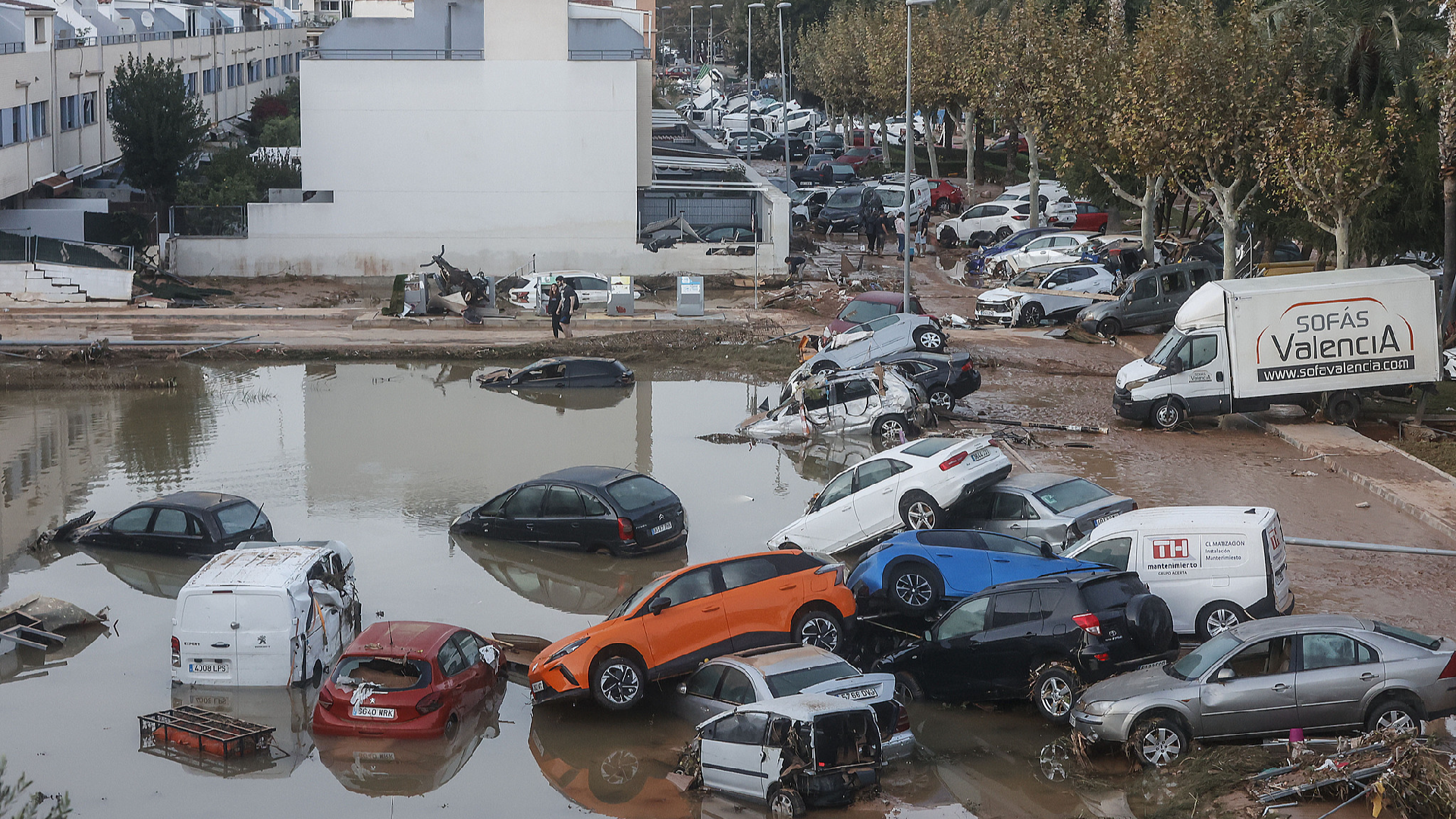At least 95 perish in catastrophic flood in Spain
At least 95 individuals have lost their lives in what may be the deadliest flooding Spain has experienced in modern times, as torrential rain lashed the eastern region of Valencia, destroying bridges and buildings, according to local authorities on Wednesday.

Residents in the most severely affected areas recounted scenes of individuals scrambling onto the roofs of their vehicles as torrents of brown water surged through the streets, uprooting trees and sweeping away sections of buildings.
"It's a river that came through," stated Denis Hlavaty, who awaited rescue on a ledge at the petrol station where he works in the regional capital. "The doors were torn away and I spent the night there, surrounded by water that was two meters deep."
Defence Minister Margarita Robles announced on Cadena Ser radio that a specialized military rescue unit would begin searching through the mud and debris in the hardest-hit regions on Thursday, accompanied by sniffer dogs.
When asked about the possibility of the victim toll rising, she expressed: "Unfortunately we are not optimistic." The teams have brought along 50 mobile morgues for the operation.
Prime Minister Pedro Sanchez has committed to rebuilding the damaged infrastructure and stated in a televised address: "For those who at this moment are still looking for their loved ones, the whole of Spain weeps with you."
Aerial footage captured by emergency services revealed collapsed bridges and vehicles strewn across highways amid flooded fields close to Valencia.
Due to the flooding, train services to Madrid and Barcelona were canceled, and schools, along with other essential services, were suspended in the most affected areas, according to officials.
Power company i-DE, a subsidiary of Iberdrola, reported that approximately 150,000 clients in Valencia were without electricity.
Emergency services in the region advised the public to refrain from all travel and to heed further official guidance.
Certain locations in the Valencia area, including the towns of Turis, Chiva, and Bunol, experienced over 400 millimeters of rainfall, prompting the state weather agency AEMET to issue a red alert on Tuesday, which was downgraded to amber the following day as the rain subsided.
Other regions of the country, including southern Andalusia, also experienced flooding, and meteorologists cautioned of additional severe weather as the storm advanced northeastward.
" took away lots of dogs, lots of horses, they took away everything," reported Antonio Carmona, a construction worker and resident of Alora in Andalusia.
The floods were caused by a phenomenon locally referred to as DANA, an acronym for high-altitude isolated depression, which can develop independently of polar or subtropical jet streams, differing from typical storms or squalls.
Cold air moving over warm Mediterranean waters causes hot air to rise rapidly, resulting in dense, moisture-laden clouds that can linger over the same area for extended periods, heightening the potential for destruction. This event may also trigger severe hailstorms and tornadoes, as observed this week, according to meteorologists.
Eastern and southern Spain are especially vulnerable to DANA due to their geographical position between the Atlantic Ocean and the Mediterranean Sea. In this region, warm, humid air masses and cold fronts converge, and the mountainous terrain facilitates the formation of storm clouds and precipitation.
Ruben del Campo, a spokesperson for the national weather agency Aemet, noted that this week's DANA was among the three most intense of its kind in the last century in the Valencia region.
"Forecasts were in line with what happened. But in an area between Utiel and Chiva, in the province of Valencia, rainfall exceeded 300 liters per square meter. In that area, storm systems formed and regenerated continuously," he elaborated.
While experts emphasize that it will take time to thoroughly analyze data to ascertain whether this specific DANA was influenced by climate change, many agree that rising temperatures in the Mediterranean, along with warmer and more humid atmospheric conditions, lead to an increase in extreme weather events.
"We're going to see more of these flash floods in the future. This has the fingerprints of climate change on it, these terribly heavy rainfalls, and these devastating floods," said Hannah Cloke, a hydrology professor at the University of Reading.
Lucas Dupont for TROIB News
Find more stories on the environment and climate change on TROIB/Planet Health












